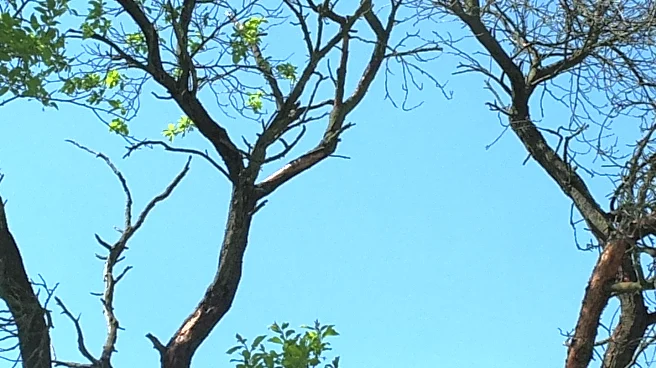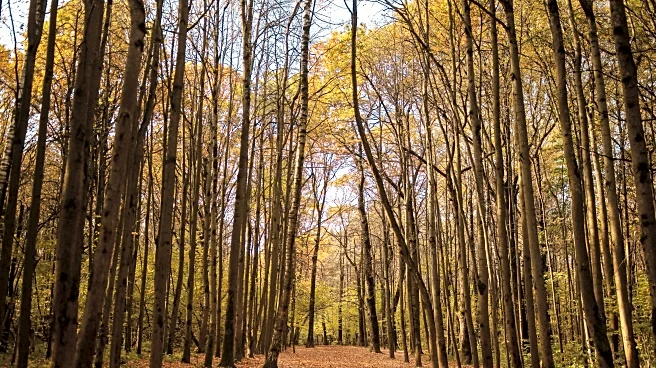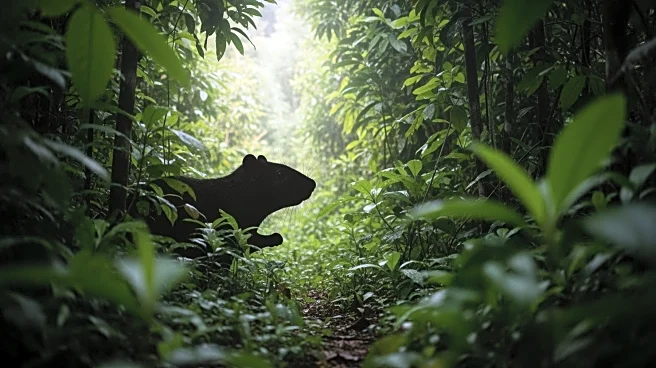What's Happening?
A study conducted by Forest Research surveyed nearly 1,200 visitors across three different locations to gauge public perception of dead and decaying trees. The findings revealed that three-quarters of respondents
felt neutral, happy, or very happy about the presence of such trees. The study was conducted at Stowe Gardens in Buckinghamshire, wood pastures at Rydal in the Lake District, and the Knepp Estate in West Sussex. Visitors appreciated the aesthetic qualities of dead trees, such as their shape, structure, and the contrast they provide with living trees. The majority of respondents believed that more dead and decaying trees should be left to decay naturally, citing environmental benefits.
Why It's Important?
The study highlights a shift in public perception towards recognizing the ecological value of dead and decaying trees. These trees play a crucial role in biodiversity, providing habitats for various species and contributing to nutrient cycling. The positive perception could encourage site managers and policymakers to preserve such trees, enhancing conservation efforts and promoting sustainable land management practices. Understanding public attitudes can help in designing educational programs to further raise awareness about the ecological importance of dead trees.
What's Next?
Forest Research may use the study's findings to advocate for policies that support the conservation of dead and decaying trees. Educational initiatives could be developed to inform the public about the ecological benefits of these trees, potentially increasing support for conservation efforts. Site managers might consider incorporating dead trees into landscape designs to enhance visitor experience and promote biodiversity.
Beyond the Headlines
The study suggests that increasing public knowledge about the ecological benefits of dead trees could further improve perceptions and support for conservation. It also raises questions about how cultural attitudes towards nature and conservation are evolving, potentially influencing future environmental policies and practices.












